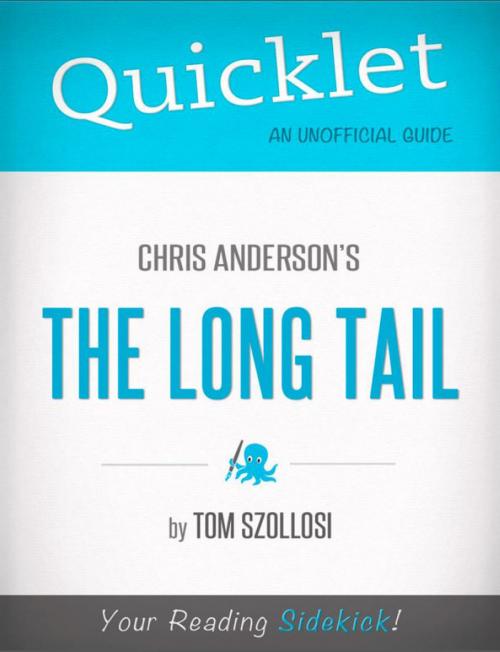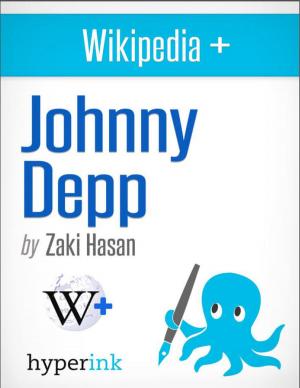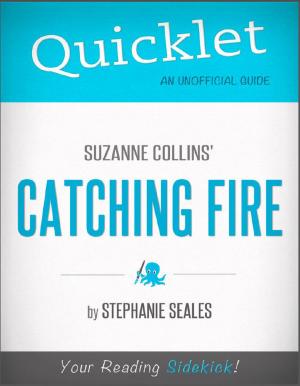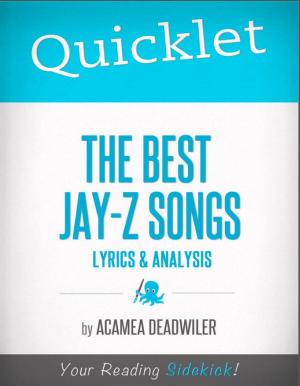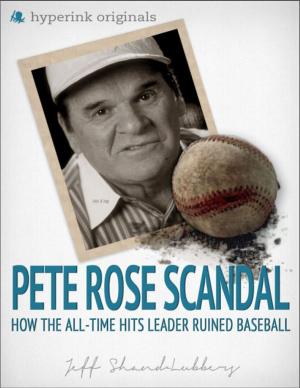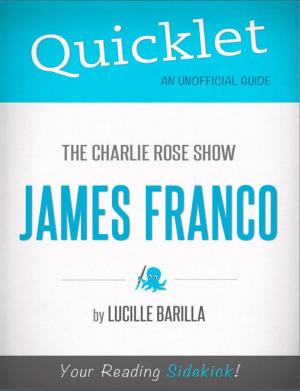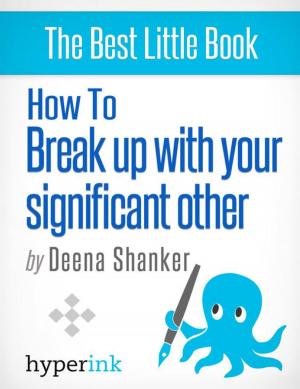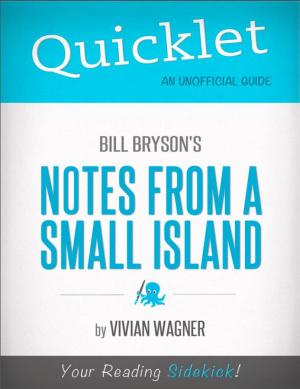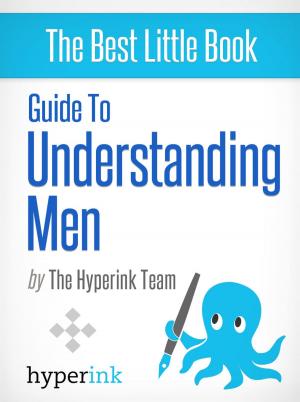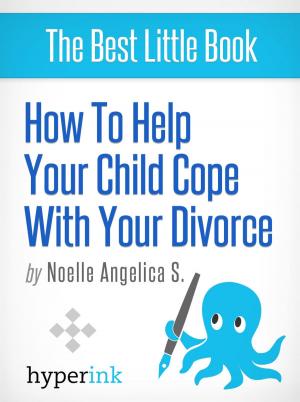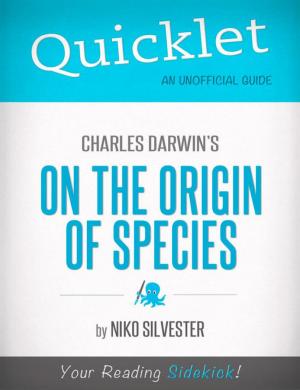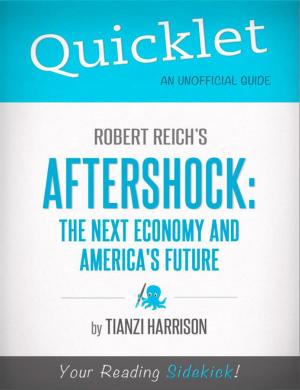Quicklet on Chris Anderson's The Long Tail (CliffNotes-like Summary)
Nonfiction, Reference & Language, Study Aids, Book Notes, Art & Architecture, General Art| Author: | Tom Szollosi | ISBN: | 9781614641247 |
| Publisher: | Hyperink | Publication: | February 24, 2012 |
| Imprint: | Hyperink | Language: | English |
| Author: | Tom Szollosi |
| ISBN: | 9781614641247 |
| Publisher: | Hyperink |
| Publication: | February 24, 2012 |
| Imprint: | Hyperink |
| Language: | English |
ABOUT THE BOOK
Sporting the provocative subtitle: “Why The Future of Business Is Selling Less of More,” The Long Tail is a watershed moment in how we think about business in the Internet Age.
Twentieth Century businesses founded on the idea of “hits” emphasized the top ten, twenty, fifty -- pick a number -- of almost anything that could be sold.
Movie box office, music, or new cars were judged by sales rankings, and those rankings were equated with quality, desirability, and value.
Author Chris Anderson, in many ways a true man of the 21st Century, has a different theory. He posits that in an age of vast digital storage capacities, Internet staples like Amazon, iTunes, Ebay and others have forever altered how customers consider what to buy.
In 2004, as Editor-In-Chief of Wired magazine, he first wrote an article entitled “The Long Tail,” which asserted that “endless choice” creates “unlimited demand.” Translation: if you have everything in stock, you can keep selling it.
In this new reality, instead of a business model driven solely by hits, Anderson held that the new digital model would depend as much or more upon “niche” buying, because product that took up no physical space could be kept available for sale virtually forever.
MEET THE AUTHOR
Tom Szollosi graduated from UCLA in 1972 with a degree in English Literature. After a short stint in advertising, he wrote for television beginning in 1976, and has continued to the present, logging over 100 episodes of both drama and comedy. Tom has also written five motion pictures, four novels, and taught screenwriting at UCLA Extension for six years. Tom loves baseball, writing, books, and politics, though not necessarily in that order. Most recently, he has been exploring the world of e-books. He is married, has two sons, and lives in Los Angeles.
EXCERPT FROM THE BOOK
Chris Anderson himself says it best in The Long Tail: “The theory of the Long Tail can be boiled down to this: Our culture and economy are increasingly shifting away from a focus on a relatively small number of hits (mainstream products and markets) at the head of the demand curve, and moving toward a huge number of niches in the tail.”
These niches, according to Anderson, are “everything else.” No wonder it’s long.
Very little of what’s out there is hot at any particular moment. What is hot, a “hit,” comprises the front, or head, of that demand curve. Everything else is part of the tail.
You can sell less of a hit if small quantities of all those other things keep moving, and the research says they do.
First, Anderson explains how the Internet has “unified elements of a supply-chain revolution that had been brewing for decades.” At lightening speed, TV and top-40 radio lost much of their taste-shaping clout to the computer and its secret weapon, the Internet.
Buy a copy to keep reading!
ABOUT THE BOOK
Sporting the provocative subtitle: “Why The Future of Business Is Selling Less of More,” The Long Tail is a watershed moment in how we think about business in the Internet Age.
Twentieth Century businesses founded on the idea of “hits” emphasized the top ten, twenty, fifty -- pick a number -- of almost anything that could be sold.
Movie box office, music, or new cars were judged by sales rankings, and those rankings were equated with quality, desirability, and value.
Author Chris Anderson, in many ways a true man of the 21st Century, has a different theory. He posits that in an age of vast digital storage capacities, Internet staples like Amazon, iTunes, Ebay and others have forever altered how customers consider what to buy.
In 2004, as Editor-In-Chief of Wired magazine, he first wrote an article entitled “The Long Tail,” which asserted that “endless choice” creates “unlimited demand.” Translation: if you have everything in stock, you can keep selling it.
In this new reality, instead of a business model driven solely by hits, Anderson held that the new digital model would depend as much or more upon “niche” buying, because product that took up no physical space could be kept available for sale virtually forever.
MEET THE AUTHOR
Tom Szollosi graduated from UCLA in 1972 with a degree in English Literature. After a short stint in advertising, he wrote for television beginning in 1976, and has continued to the present, logging over 100 episodes of both drama and comedy. Tom has also written five motion pictures, four novels, and taught screenwriting at UCLA Extension for six years. Tom loves baseball, writing, books, and politics, though not necessarily in that order. Most recently, he has been exploring the world of e-books. He is married, has two sons, and lives in Los Angeles.
EXCERPT FROM THE BOOK
Chris Anderson himself says it best in The Long Tail: “The theory of the Long Tail can be boiled down to this: Our culture and economy are increasingly shifting away from a focus on a relatively small number of hits (mainstream products and markets) at the head of the demand curve, and moving toward a huge number of niches in the tail.”
These niches, according to Anderson, are “everything else.” No wonder it’s long.
Very little of what’s out there is hot at any particular moment. What is hot, a “hit,” comprises the front, or head, of that demand curve. Everything else is part of the tail.
You can sell less of a hit if small quantities of all those other things keep moving, and the research says they do.
First, Anderson explains how the Internet has “unified elements of a supply-chain revolution that had been brewing for decades.” At lightening speed, TV and top-40 radio lost much of their taste-shaping clout to the computer and its secret weapon, the Internet.
Buy a copy to keep reading!
